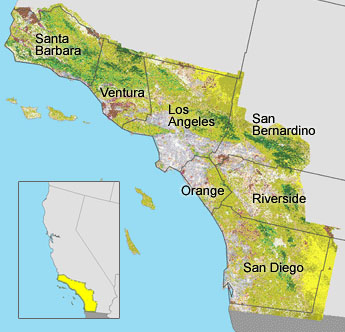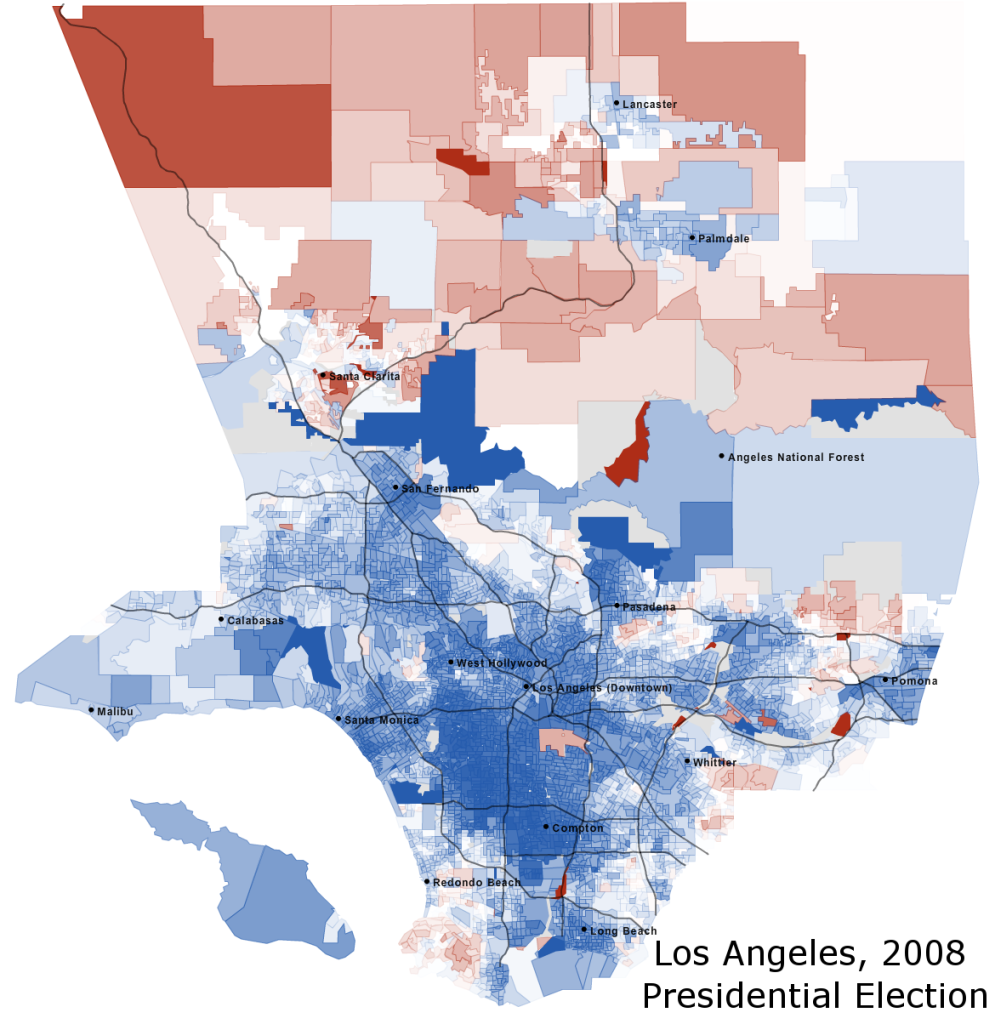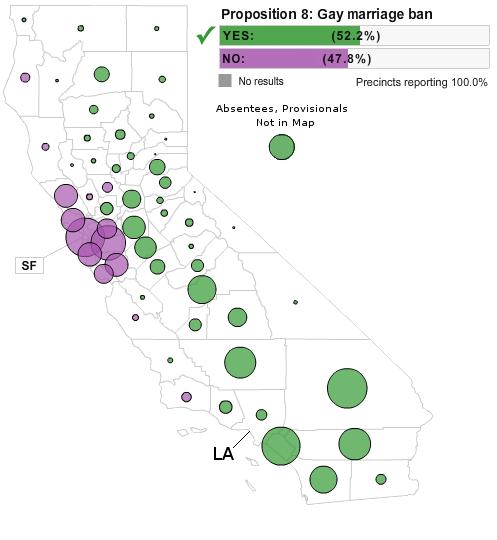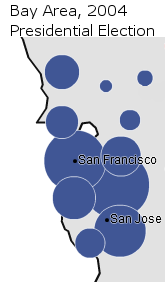
According to a report published by the AFL-CIO, online piracy costs content providers (mostly TV networks and movie studios) a lot of money. Around $20 billion annually. That, in turn, costs a staggering number of industry-related jobs – over 140,000 by some estimates.
As a freelance film editor, this scares the hell out of me. If the networks and studios I work for don’t make money, sooner or later I’m out of a job. And if I’m out of a job long enough, I lose my union health benefits, my pension, the whole ball of wax.
I know it scares the hell out of my union, IATSE, judging by numerous emails warning how my livelihood is in grave danger from “foreign rogue sites” dedicated to wholesale theft of the intellectual property of my employers.
On the flip side, there were petitions filing my inbox from internet watchdog groups urging me to tell Congress to “preserve free speech”, and that if I didn’t, the “internet as we know it” would cease to exist.
Now, if you don’t know what they’re talking about, you’re not not alone. Until I started getting these emails, I too was blissfully ignorant about the alphabet-soup of anti-piracy legislation currently grinding it’s way through the bowels of Congress – the Stop Online Piracy Act (SOPA) in the House and the Protect IP Act (PIPA) in the Senate.
But as I researched the bills and clawed my way though mountains of evidence on both sides predicting internet Armageddon, I quickly realized online piracy (and the solutions being put forth to curb it) is something we don’t have the luxury to ignore. Because what happens in the next month could profoundly affect many aspect of our lives, not just how we interact online.
So I’ll make you a deal: If you’ll stick around to read this, I’ll spare you the hyperbole and techno-speak and explain what I’ve learned in plain English.
Please, let my pain be your gain.
BUT FIRST, A HISTORY LESSON…..
SOPA and PIPA are designed to close existing loopholes in online piracy enforcement. To explain how, I first have to talk about another law: the Digital Millennium Copyright Act, otherwise known as DMCA.
Enacted in 1998, DMCA was Congress’s first attempt to deal with the brave new world of illegal file sharing. In a nutshell, it criminalized online copyright infringement while protecting “Fair Use” doctrine, as well as giving “safe harbor” to internet service providers (ISPs), websites and search engines which unknowingly hosted or linked to pirated material.
(I’ll circle back to “fair use” and “safe harbor” later, but keep these terms in your head. They’re really, really important – it’s why YouTube, Facebook, Flickr and even small sites like this blog aren’t sued out of existence every time someone uploads a photo or links to a movie clip.)
However, DMCA was limited. It only applied to domestic ISPs, websites and search engines. Why? Because US copyright law ends at our borders. Domestic plaintiffs can’t collect damages for overseas copyright infringement.
Of course, the first thing online pirates did after DMCA became law was set up shop overseas and out of the reach of US courts.
So ten years later, Congress passed another law, the PRO-IP Act, which increased penalties and gave new enforcement powers to Immigration and Customs Enforcement, the agency most recently known for mistakenly deporting a 14 year-old girl to Columbia.
ICE could, with a simple affidavit, obtain a court order to seize the site’s domain name and IP address. Anyone clicking on a seized site would see this:
Even though hundreds of domains were seized ( a partial list here ), critics complained PRO-IP didn’t solve the “foreign rogue websites” problem. Perpetrators – especially those operating overseas – disappeared easily, escaping fines and summary judgments, quickly setting up new and anonymous Internet storefronts at will. Even if found, there was often no way of tying the individuals who ran foreign sites to assets in the United States.
Got all that?
Good. Because this is where the fun starts.
SOPA AND PIPA TO THE RESCUE!
SOPA and PIPA are designed to do one thing and one thing only – tie online pirates to assets in the United States so our justice system can get at them to collect civil judgments and cut off sources of revenue.
Of course, making that happen is not so simple. The internet is a complicated, borderless thing which changes faster than a teenager’s hormones on a Pepsi high.
So the bill’s authors tried to come up with a number of different ways to skin the same cat.
- Extend the authority to seize domain names and IP addresses to foreign websites determined to be in violation US Copyright law.
- Compel domestic ISPs, websites and search engines to block internet access to any foreign websites determined to be in violation US Copyright law.
- Prosecute developers who offer products or services that could be used to circumvent the blockade of foreign websites determined to be in violation US Copyright law.
- Compel domestic financial service providers (Paypal, Visa, Wells Fargo, etc….) and internet advertisers to close accounts and block payments to any foreign websites determined to be in violation US Copyright law.
The bills also includes a provision the American Bar Association labels “a rather novel reinvention of online”market-based” enforcement” by allowing copyright owners and their agents to initiate a “private right of action” to seek termination of an infringing site’s advertising and financial services.
Lastly, this legislation gives blanket immunity to any US-based financial service providers, advertisers, ISPs, websites, and search engines which voluntarily blocks internet access or terminates its services. It does this even if the site’s owners did not knowingly host pirated material, or the allegations later prove to be unfounded.
AND THIS IS WHERE IT ALL GOES SO HORRIBLY, HORRIBLY WRONG……
Even without SOPA/PIPA’s First Amendment implications (you can read some pretty good arguments here, here and here), the bills as currently proposed are horribly flawed documents devised by people who either don’t understand how the internet works, or worse, understand it all too well and are trying to game the system for unfair competitive advantage.
SOPA’s sponsor, Texas Republican, Lamar Smith, thinks any fears are “completely unfounded”.
“The criticism of this bill is completely hypothetical; none of it is based in reality,” said Smith, R.-Texas, in a statement. “Not one of the critics was able to point to any language in the bill that would in any way harm the Internet. Their accusations are simply not supported by any facts…..they need to read the language. Show me the language.”
You’re on, Lamar.
SOPA/PIPA ARE BILLS BUILT ON A FOUNDATION OF QUICKSAND
As I said before, ICE has seized hundreds of domestic domains under the PRO-IP Act. Well, it turns out some site owners are fighting back, suing the government for violating their First Amendment rights, saying the law’s “seize now, ask questions later” enforcement equals prior restraint. In at least one case, a judge agreed, throwing out part of the government’s case and expediting the site owner’s suit.
And then there’s the Kafkaesque case of dajaz1.com, a popular hip-hop music site which had it’s domain seized in 2010, then restored over a year later – all without a single charge being filed.
As the details came out, it became clear that ICE and the Justice Department were in way over their heads. ICE’s “investigation” was done by a technically inept recent college grad, who didn’t even seem to understand the basics of the technology. But it didn’t stop him from going to a judge and asking for a site to be completely censored with no due process.
The site’s lawyer, Andrew Bridges, filed a motion to get the site back. Instead of responding as the law required, the government stonewalled Bridges while they secretly pursued multiple filing extensions from the court in order to hold on to the site.
The government was required to file for forfeiture by May. The initial (supposed) secret extension was until July. Then it got another one that went until September. And then another one until November… or so the government said. When Bridges asked the government for some proof that it had actually obtained the extensions in question, the government attorney told Bridges that he would just have “trust” him.
You can read the whole story here. It’s not pretty. Eventually, the government unilaterally decided it didn’t have probably cause after all and just dropped the case without comment.
SOPA/PIPA INTERFERES WITH UNITED STATES FOREIGN POLICY

Don’t expect oppressive regimes like Syria, Iran, or Burma to take our lectures about internet freedom seriously, not while Congress is proposing protocols for site blocking that China already uses to restrict their citizen’s access the web.
Worse, if ICE starts going after software developers, they’re going to have to go after contractors the State Department hired to do the very thing Congress just made illegal.
Seriously. I’m not making this up. Last June, the NY Times reported:
The Obama administration is leading a global effort to deploy “shadow” Internet and mobile phone systems that dissidents can use to undermine repressive governments that seek to silence them by censoring or shutting down telecommunications networks.
The effort includes secretive projects to create independent cellphone networks inside foreign countries, as well as one operation out of a spy novel in a fifth-floor shop on L Street in Washington, where a group of young entrepreneurs who look as if they could be in a garage band are fitting deceptively innocent-looking hardware into a prototype “Internet in a suitcase.”
Financed with a $2 million State Department grant, the suitcase could be secreted across a border and quickly set up to allow wireless communication over a wide area with a link to the global Internet……
Some projects involve technology that the United States is developing; others pull together tools that have already been created by hackers in a so-called liberation-technology movement sweeping the globe…….
“The cool thing in this political context is that you cannot easily control it,” said Aaron Kaplan, an Austrian cybersecurity expert whose work will be used in the suitcase project. Mr. Kaplan has set up a functioning mesh network in Vienna and says related systems have operated in Venezuela, Indonesia and elsewhere.
SOPA/PIPA INTERFERES WITH US CYBER SECURITY
First, by mandating provisions completely incompatible with next-generation internet security standards and secondly, by throwing US software developers into legal limbo.
It turns out targeting software which could potentially be used for circumventing blacklisted websites also means targeting the same security software we use to keep our personal computers safe from malware, networked businesses safe from denial-of-service attacks and even payments to online financial service providers like PayPal safe from theft.
Meanwhile, as legitimate software developers sit around twiddling their thumbs, 20 year-old hackers have already created workarounds to domain blocking in anticipation of SOPA/PIPA.
Have fun with that.
SOPA/PIPA PLACES ALL THE BURDEN FOR ENFORCEMENT ON
US WEBSITES AND BUSINESSES
Supporters, including my union, like to point out that SOPA/PIPA only affects foreign websites. This is demonstrably not true.
Remember, the Justice Department has no jurisdiction overseas, but it does have jurisdiction over domestic ISPs, websites, and search engines, domestic financial service providers and domestic software developers. SOPA/PIPA may target foreign sites, but all the legal liability and compliance costs would fall on American companies. As techdirt.com points out,
We’ve been trying to make this point for months, and the folks in favor of these bills just keep ignoring it insisting time and time again that this is just about foreign sites. Most of those people have never been entrepreneurs. They’ve never worked at a company where the threat of legal action is a BIG DEAL, that can massively disrupt operations (and cash flow). They don’t realize that increasing liability, compliance costs and legal risks isn’t just a nuisance — it can force an entire business to shut down. We’ve talked about how these bills change things so that it’s not just two engineers in a garage any more, but two engineers… who need a team of a dozen lawyers.
SOPA/PIPA CAN BE MANIPULATED TO STIFLE FREE SPEECH AND
FREE MARKET COMPETITION
Remember how I mentioned “fair use” and “safe harbor” at the beginning of this post? Let’s circle back to that now.
I use a lot of social media – YouTube, Facebook, and Twitter to share information, links, videos and other online content. And I do this under the “Fair Use” doctrine, which allows me to use copyrighted material without permission for “transformative” purposes such as commentary, criticism and parody.
What is a “transformative” use? If this definition seems ambiguous or vague, be aware that millions of dollars in legal fees have been spent attempting to define what qualifies as a fair use. There are no hard-and-fast rules, only general rules and varied court decisions, because the judges and lawmakers who created the fair use exception did not want to limit its definition. Like free speech, they wanted it to have an expansive meaning that could be open to interpretation.
Now, to illustrate my point, I’m going to link to this really cool video created by a fan of “Castle”, the ABC Television show I work on. Go ahead, have a look. I’ll wait.
http://www.youtube.com/watch?f…
Great video, isn’t it?
It also happens to be made up of hundreds of copyrighted clips I’m reasonably sure ABC Television never gave permission to use. But that’s OK, because I’m also reasonably sure the video is covered by Fair Use. But if I’m wrong about that, this is where DMCA’s “safe harbor” provisions come in.
Safe Harbor assumes I didn’t knowingly post anything which violates US copyright law. So even if my ISP gets a take-down notice from ABC, Safe Harbor is supposed to protect me as long as I comply with the notice and remove the video.
Together, Fair Use and Safe Harbors allow for innovation because they create safe space for both free expression and honest mistakes. But content providers hate Fair Use and (more importantly) Safe Harbors because providers think these exceptions take the teeth out of enforcement, creating loopholes you could drive a truck through.
SOPA/PIPA gets rid of Safe Harbors. There is no safe space. A copyright holder can initiate a “private right of action”, convince a judge to issue an injunction (which we now know is way too easy to do) get your domain blocked, your advertising pulled and your finances frozen.
And thanks to to SOPA/PIPA’s immunity provisions, a copyright holder wouldn’t even need a court order shut you down, just a letter to your service providers threatening to.
This section says that anyone who takes voluntary action “based on credible evidence” basically gets full immunity. Think about what that means in practice. If someone sends a service provider a notice claiming infringement on the site under this bill, the first thing every lawyer will tell them is “quick, take voluntary action to cut them off, so you get immunity.” Even worse, since this is just about immunity, there are no counter notice rules or anything requiring any process for those cut off to be able to have any redress whatsoever.
Between blanket immunity, the loss of safe harbor, and the lack of any redress for impacted site owners, SOPA/PIPA actually incentivizes wholesale abuse.
It’s already happening. Entire legal industries have been built around responding to DMCA takedown notices in bulk. Thin-skinned businesses routinely ignore Fair Use to issue DMCA takedown notices against sites which criticize them. Unscrupulous content providers also sue legitimate online competitors for copyright infringement just to bankrupt them.
In 2007, Universal Music Group (UMG) brought a lawsuit against Veoh Networks (Veoh), a video hosting website, alleging that Veoh facilitated copyright infringement by providing a website that hosted videos containing music owned by UMG. On December 20, 2011, the Ninth Circuit Court of Appeals upheld a summary judgment in favor of Veoh and held that Veoh was protected by the Digital Millennium Copyright Act’s (DMCA) “safe harbor” provisions….
While Veoh’s website was found to be perfectly legal, its victory is bittersweet; the small startup company filed for bankruptcy early in 2010 from the high cost of defending its case.
At least under DMCA, Veoh could keep it’s business running while the case was litigated.
The SOPA/PIPA bills, however, would have immediately shut Veoh’s website down before it even had its day in court, thereby keeping Veoh from running its business which, in this case, was ultimately found to be perfectly legal. There is cause for concern when copyright holders abuse the law to stymie innovative new startups.
There are also some nasty implications for political campaigns. Implications that ought to give the bill’s Congressional supporters pause.
Imagine you are running for Congress in a competitive House district. You give a strong interview to a local morning news show and your campaign posts the clip on your website. When your opponent’s campaign sees the video, it decides to play hardball and sends a notice to your Internet service provider alerting them to what it deems “infringing content.” It doesn’t matter if the content is actually pirated. …. If you don’t take the video down, even if you believe that the content is protected under fair use, your website goes dark.
I’m sure nothing like that would ever happen, because, you know, it never has before.
During the waning days of the 2008 presidential race, there was an important but overlooked occurrence on the John McCain campaign. In mid-October, the McCain campaign awoke to find that its Web videos and online advertisements were disappearing from its YouTube page.
The culprit turned out to be a major television network claiming they owned portions of the videos and that posting the clips was a violation of copyright law. Even though the campaign, and many others in the online community, believed the content to be privileged under the “Fair Use Doctrine,” the videos were pulled down.
John McCain, by the way, is one of PIPA’s co-sponsors.
THE DIVIDE OVER SOPA/PIPA ISN’T POLITICAL – IT’S BETWEEN THOSE WHO UNDERSTAND THE INTERNET AND THOSE WHO DON’T
What do Darrell Issa, Nancy Pelosi, the ACLU, Daily Kos, RedState.com, Markos Moulitsas and Ron Paul have in common? They all oppose SOPA/PIPA.
Personally, I’ve never agreed with Darrel Issa on any issue ever, but I agree with him on this.
How is this possible? Because the divide over SOPA/PIPA isn’t political, it’s between those who understand how the internet works and those who don’t, those who see opportunities for growth and innovation and those who fear change and are holding on to old business models for dear life.
During the House Judiciary Committee’s SOPA hearings last December, it became nightmarishly clear Congressmembers who support these bills are in the “don’t understand how the internet works” camp.
It’s exactly as we feared….this is like a group of well-intentioned amateurs getting together to perform heart surgery on a patient incapable of moving. “We hear from the motion picture industry that heart surgery is what’s required,” they say cheerily. “We’re not going to cut the good valves, just the bad – neurons, or whatever you call those durn thingies.”
This is terrifying to watch. It would be amusing – there’s nothing like people who did not grow up with the Internet attempting to ask questions about technology very slowly and stumbling over words like “server” and “service” when you want an easy laugh. Except that this time, the joke’s on us.
It’s been a truism for some time that you can tell innovation in an industry has ceased when the industry starts to develop a robust lobbying and litigating presence instead.
Which brings me back to my union, IATSE.
I believe my union leadership is acting in good faith to look after the best interests of its membership. But I don’t think my union leadership understands how the Internet works. By backing the industry’s position on SOPA/PIPA, I believe they’re tying themselves to a business model that simply can’t be sustained and won’t be rescued by badly crafted legislation.
Look, you can’t un-ring this bell. Internet file sharing, streaming video, and movies-on-demand aren’t going away. Fans of American television shows and movies use the internet to form international online communities, upload their favorite clips via YouTube and share them on Twitter and Facebook. As an industry, we should encourage them. Because today’s “pirates” are tomorrow’s customers.
It’s a brave new world out there.
We’ve been down this road before with the music industry. Ten years ago, while all the major record labels responded to file sharing by locking up content and suing Napster into the ground, Steve Jobs quietly developed iTunes. By tapping into a market that was already habituated to file sharing and offering quality content conveniently and legally at a price point people were willing to pay, Apple dominated the music industry while the record labels tanked.
We either follow the path of the record labels or we follow the path Apple took. I’d rather follow Apple. And frankly, I wish IATSE was leading the charge.
WHAT YOU CAN DO TO HELP
PIPA is scheduled for a cloture vote in the Senate on January 24th, meaning it would take 60 votes to break a filibuster. So far 49 Senators are on record as supporting PIPA, which means they’d need 11 more to advance the bill to the floor of the Senate for an up or down vote.
Opponents of SOPA/PIPA have set up this handy website so you can find out which lawmakers support the bills. If it turns out your Congressmember supports the bills, click on their name and the site will take you to a page with their contact information. Please call them right away.
Unfortunately, both Barbara Boxer and Diane Feinstein are co-sponsors of PIPA. (Feinstein seems particularly clueless, stating she thought the tech industry were just fine with the bills)
Click on this link to get Barbara Boxer’s contact information
Click on this link to get Diane Feinstein’s contact information
 Her term is up in 2016, will she run again?
Her term is up in 2016, will she run again?







